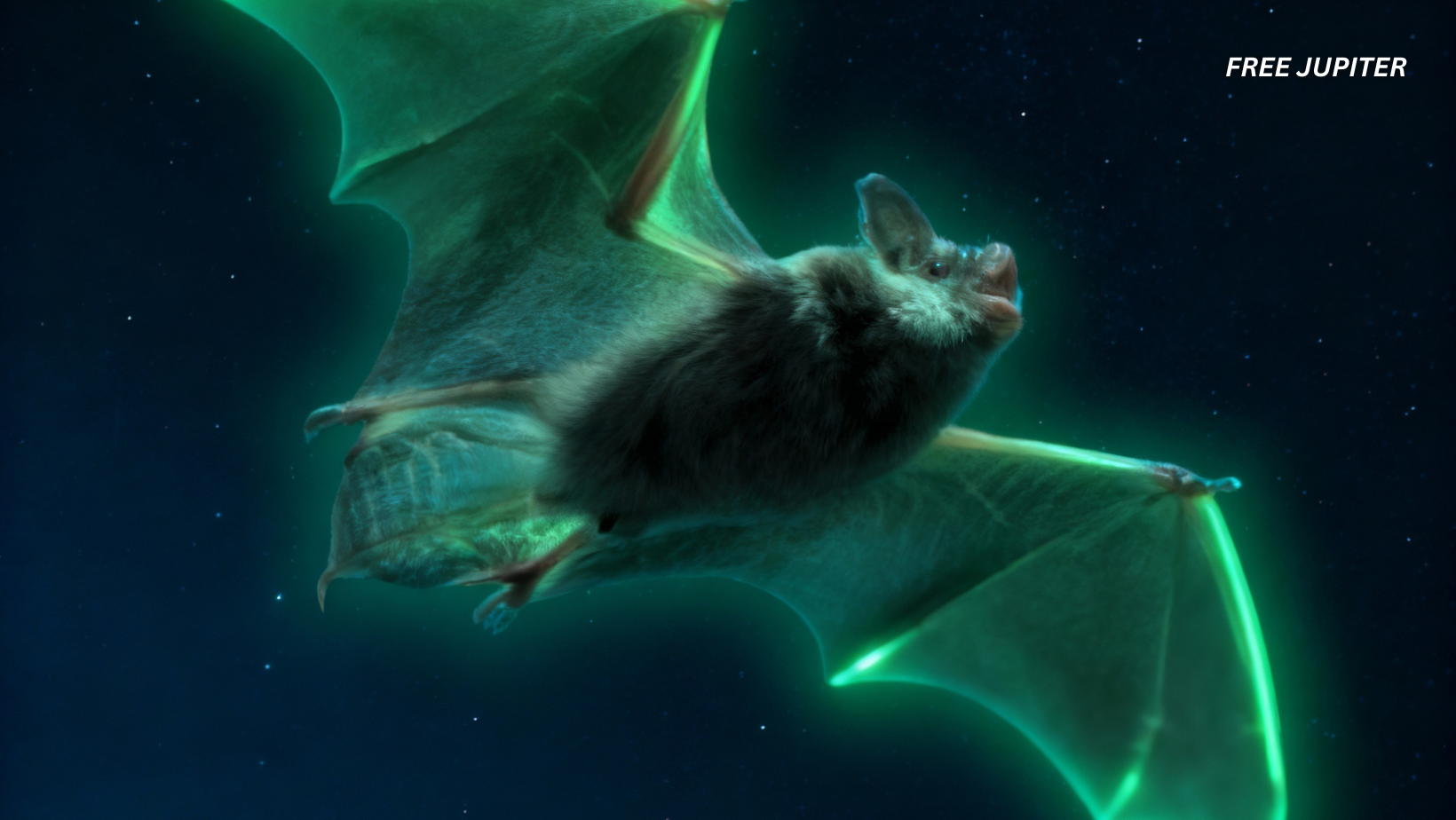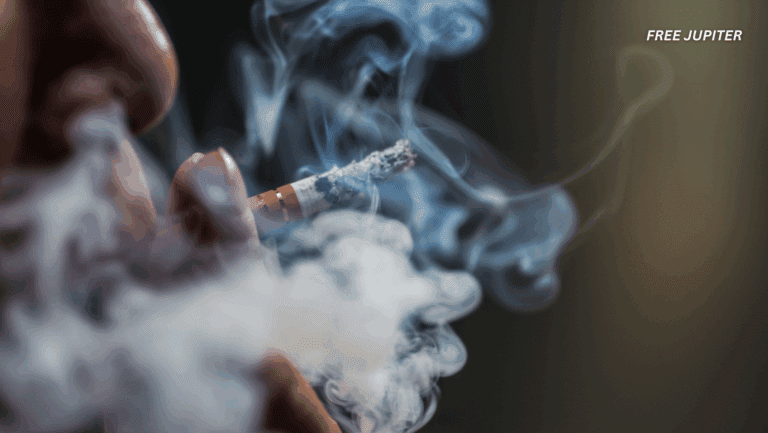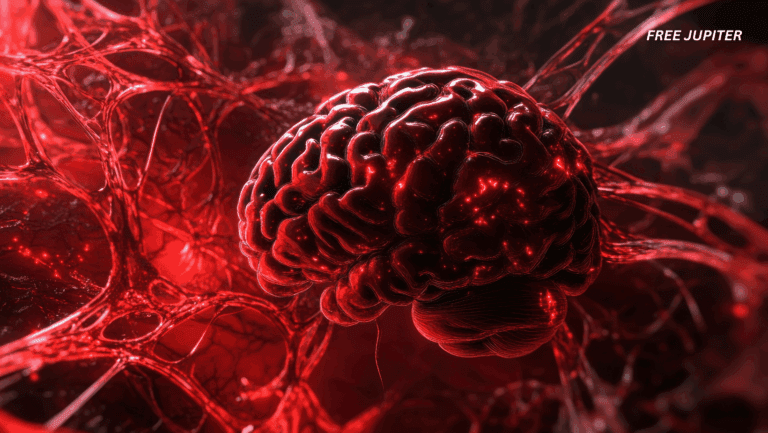As Halloween decorations start to appear — complete with eerie glowing bats hanging from trees and porch ceilings — it might surprise you to learn that nature has its own real-life version of these glowing creatures. According to a new study from the University of Georgia, several species of bats across North America actually emit a faint green glow when exposed to ultraviolet (UV) light. The discovery has fascinated biologists and puzzled them in equal measure, as no one quite knows why these nocturnal animals possess this peculiar ability.
A Surprising Discovery in the Museum
The revelation didn’t come from observing bats in the wild but rather from an unexpected experiment conducted in a museum. Researchers examined 60 bat specimens preserved in collections, representing six different species found across the United States:
- Big brown bats (Eptesicus fuscus)
- Eastern red bats (Lasiurus borealis)
- Seminole bats (Lasiurus seminolus)
- Southeastern myotis (Myotis austroriparius)
- Gray bats (Myotis grisescens)
- Brazilian free-tailed bats (Tadarida brasiliensis)
When these specimens were placed under ultraviolet light, something extraordinary happened — all of them glowed with a bright, ghostly green hue. The glow wasn’t random either. It consistently appeared on the bats’ wings, hind legs, and the membrane connecting their limbs — areas that play a vital role in flight and movement.
The phenomenon, called photoluminescence, occurs when a substance absorbs high-energy light (like UV rays) and then re-emits it as visible light. While it’s a fairly common effect in minerals or fungi, it’s still considered a biological rarity in mammals.
Read more: Neuroscientists Reveal the Exact Age When Cognitive Performance Peaks
The Unexpected Trend of Glowing Mammals
What makes the discovery even more intriguing is that bats aren’t the only mammals that can glow. Over the past few years, researchers have found that several animals — including flying squirrels, opossums, wombats, and even the platypus — exhibit various colors of luminescence under black light.
In 2020, scientists were stunned to find that the platypus, one of Earth’s most unusual mammals, glows in blue and green shades under UV light. Flying squirrels, on the other hand, radiate a brilliant pink hue. This growing list of fluorescent mammals has led to a new question: is glowing in the dark more common in nature than we ever realized?
Still, the bats’ case stands out because of one odd detail — every single specimen, regardless of species, age, or sex, glowed in the exact same way. The consistency of the glow’s color and pattern suggests something more profound than coincidence.
Evolutionary Echoes From the Past
The uniformity of the glow across multiple bat species hints that this feature might have been inherited from a common ancestor. This means that the first glowing bats could have appeared millions of years ago, long before these species diverged from one another.
Steven Castleberry, a wildlife biologist from the University of Georgia and one of the study’s authors, believes the glow might be an evolutionary leftover — a trait that once served a purpose but no longer has a clear function today.
“It may be an artifact now,” Castleberry explained. “Maybe glowing served a function somewhere in the evolutionary past, and it doesn’t anymore.”
In other words, the glow could be like a faded family heirloom — a piece of biological history that remains even though its original purpose has been forgotten.
Read more: Scientists Finally Explain Why Certain Songs Always Get Stuck in Your Head
Can Bats See Their Own Glow?
One question researchers are still wrestling with is whether bats can even see their photoluminescence. Bats, despite their reputation for being “blind,” actually have decent vision, and some species can see UV wavelengths.
The wavelengths of the bats’ glow fall within the range that their eyes can detect, but there’s a catch: bats are nocturnal creatures. Their habitats — caves, hollow trees, and dark attics — are environments where UV light is almost nonexistent. Even outdoors at night, the light levels are so low that any natural fluorescence would likely go unseen.
This leads scientists to believe that the glow might not serve a direct visual purpose, at least in modern bats. It may only become visible under specific conditions that no longer occur in their environment.
A Closer Look at the Glowing Spots
Still, researchers have noticed an intriguing pattern: the glowing areas are not random. They appear mainly on the wings and lower limbs — body parts that are visible while bats fly or forage for food. This detail could hold the key to understanding whether the glow once had an important role.
Some possible explanations include:
- Communication: The glow might have once helped bats recognize members of their own group during twilight or moonlit conditions.
- Mate signaling: The light could have played a role in courtship or attracting partners.
- Predator evasion: The glow might have served as a confusing signal to predators that hunt at dawn or dusk.
- Environmental adaptation: The glowing molecules could have helped protect the thin membranes of their wings from UV damage during daylight hours.
For now, these remain speculative ideas, as the study was conducted on preserved specimens rather than live animals.
The Next Step: Studying Live, Flying Bats
To truly understand why bats glow, scientists need to observe living specimens in real-world conditions. This will involve capturing bats, shining safe levels of UV light, and observing how they react — whether they can see the glow, respond to it, or behave differently when exposed.
Researchers are also planning to identify the chemical compounds responsible for the glow. In other fluorescent animals, proteins and pigments like porphyrins or pterins are known to cause this effect. Discovering which compounds make bats glow could provide valuable clues about whether it’s purely a coincidence or a feature with biological significance.
Additionally, scientists hope to investigate whether environmental factors — such as diet, climate, or exposure to sunlight — might influence the brightness or color of the glow.
Read more: Imagine If We Could Turn Plastic Into Fuel — This Young Inventor Just Did
Nature’s Hidden Light Show
The findings, published in the scientific journal Ecology & Evolution, add yet another layer of mystery to these fascinating creatures. Bats are already known for their unusual traits — echolocation, nocturnal vision, and unique flight mechanics — but glowing green under UV light takes their strangeness to a new level.
While we might not see their hidden glow with the naked eye, the discovery serves as a reminder that the natural world still holds secrets hiding in plain sight — or, in this case, in the dark.
So, the next time you see a bat swooping across a moonlit sky, imagine that somewhere beneath those dark wings lies a faint shimmer of green light, invisible to us but perhaps once meaningful to them. Whether it was a relic from evolution or an ancient form of bat communication, one thing is certain: even after centuries of study, nature still knows how to surprise us.
Featured image: Freepik.
Friendly Note: FreeJupiter.com shares general information for curious minds. Please fact-check all claims and double-check health info with a qualified professional. 🌱










